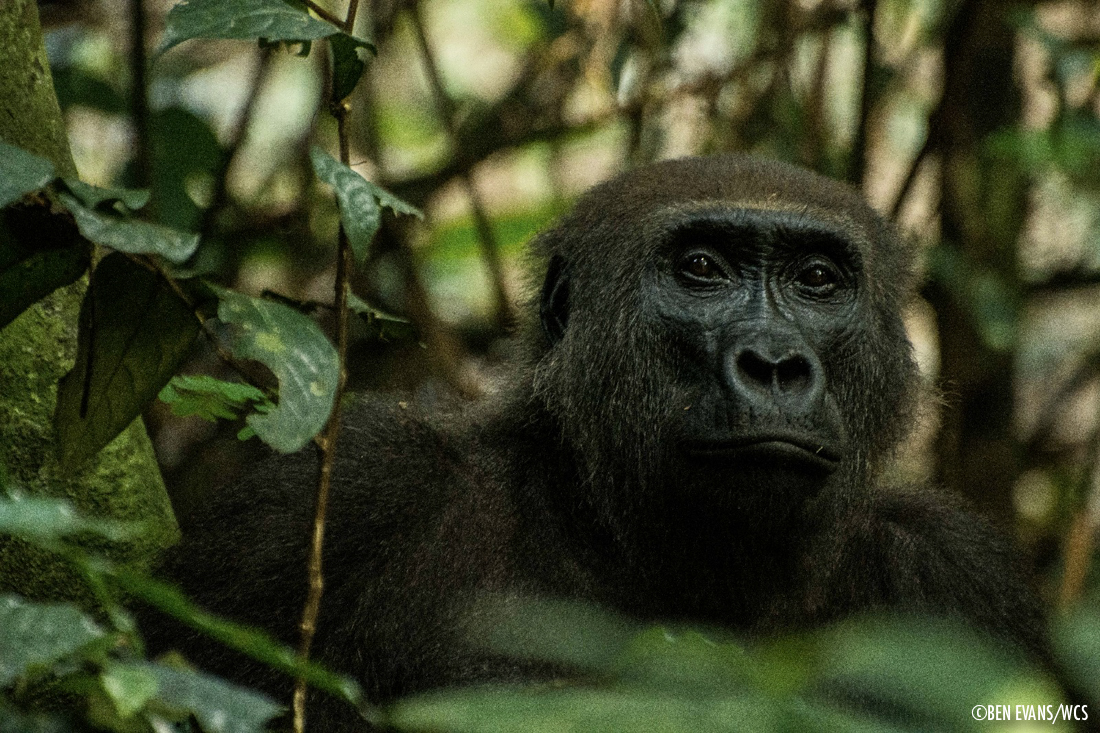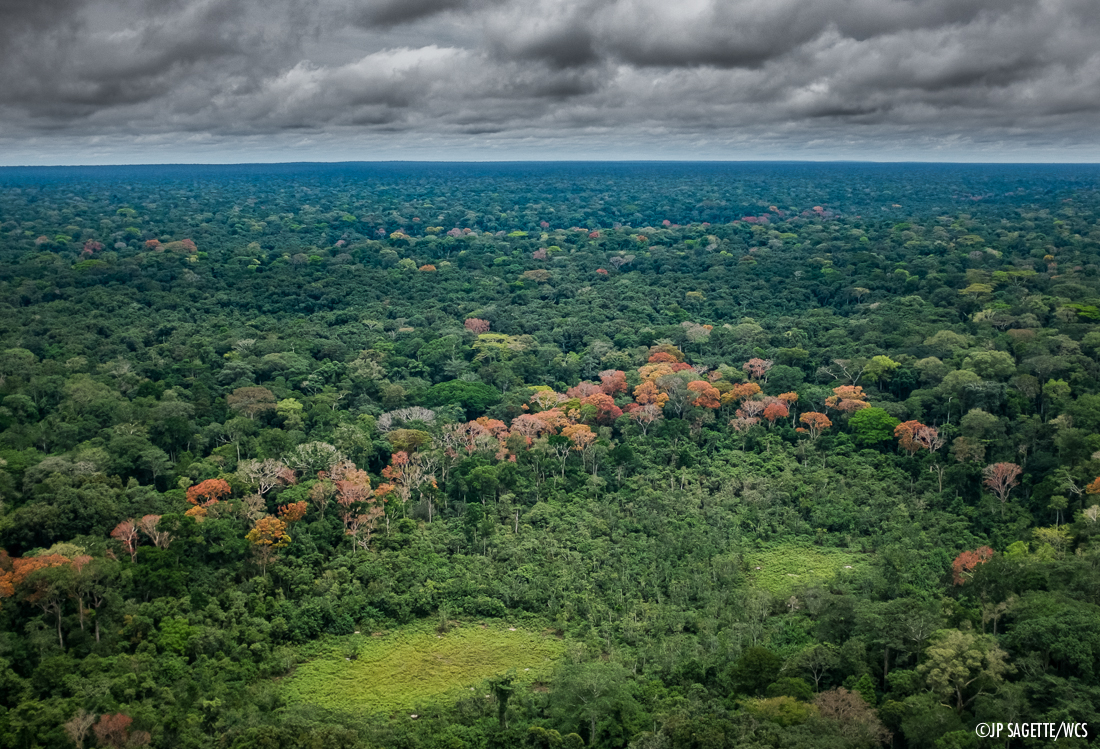
Long term study demonstrates impacts of logging on chimpanzees and gorillas
A multi-year study published in Biological Conservation today highlights the impacts before, during and after selective logging on great ape populations.
Research has shown human disturbance can have detrimental effects on great ape populations but now, due to a study published in Biological Conservation on Nov. 27th by Lincoln Park Zoo, there is evidence showing how selective logging impacts chimpanzee and gorilla populations differently by utilizing data collected before, during and after timber extraction on the periphery of the Nouabale-Ndoki National Park.
The Nouabale-Ndoki National Park in northern Republic of Congo forms part of the second largest old growth tropical forest on the planet, and one of its richest in terms of biodiversity. The Park is a stronghold for several endangered forest species, including great apes. The apes however range far beyond the borders of the park, with important habitat extending into the active timber concessions on the park periphery. Fortunately, an increasing number of timber companies have come to the realization that biodiversity conservation is essential to meeting the demands of an emerging consumer class concerned with sound environmental practices, and the forest on the periphery of the Park has been allocated to a Forest Stewardship Council (FSC) certified logging company.
In 1999 the Wildlife Conservation Society, the Congolese Ministry of Forest Economy and the logging company operating in the periphery of the the Nouabale-Ndoki National Park, Congolaise Industrielle du Bois (CIB), signed an agreement launching the Buffer Zone Project in the park periphery. The project enforces Congo hunting laws that protect endangered species, and established management systems that assure sustainable harvest of legally hunted species so that indigenous people have access to wild meat now and in the future. This agreement was one of the first of its kind and essentially extended wildlife management over 1,300,000 hectares of tropical lowland forest beyond the park boundaries.

The Forestry Stewardship Council (FSC), which is an independent, non-governmental, not-for-profit organization established to promote responsible management of the world’s forests, is internationally recognized as the gold standard for timber certification, however it is important that the efficacy of the restrictions put in place by this body are monitored. The Goualougo Triangle Ape Project, a long term study located in the Park, is a leader in developing a more comprehensive understanding of the impacts of FSC-certified logging on apes to help avoid negative impacts associated with future logging and convince governments of the need to promote timber certification.
”Western lowland gorillas avoided areas during timber extraction but returned after logging had passed through the area, in order to feed on the lush herbaceous ground vegetation. On the other hand, chimpanzees who thrive high in the tree canopies, were less likely or slower to return to their native habitat.
David Morgan, Ph.D., of the Lester E. Fisher Center for the Study and Conservation of Apes and the Wildlife Conservation Society’s Congo Program, initiated the Goualaougo Triangle Ape Project in 1999. Morgan is used to uncharted territory, spending most of his days in a remote, one-of-a-kind ecosystem called the Goualougo Triangle, located in the NNNP, that chimpanzees and western lowland gorillas call home. He has developed crucial relationships with community and conservation partners, but also ventured into new territory by creating an open dialogue and data-sharing relationship with the local timber company. The FSC-certified company offered to provide its timber inventory, and in turn, Goualougo Triangle Ape Project researchers were able to provide information on ape nesting, feeding ecology and ranging to help minimize the displacement of these endangered primates.
Collating these data provided statistically significant results. Western lowland gorillas avoided areas during timber extraction but returned after logging had passed through the area, in order to feed on the lush herbaceous ground vegetation. On the other hand, chimpanzees who thrive high in the tree canopies, were less likely or slower to return to their native habitat. The study highlighted that crucial to the protection of the returning ape groups are rangers who protect wildlife in logged areas from poachers who are granted easier access to these zones by the logging roads essential for removing the exploited timber.
Both chimpanzees and gorillas are far ranging and capable of moving out of areas where active timber extraction occurs to seek less disturbed habitat. However, displacement has different implications for the two species. Gorilla group home ranges will sometimes completely overlap, with groups tolerating each other in these shared ranges, whereas chimpanzees are territorial and aggressively defend resources in their home range from incursions by neighbouring groups. As a result, displacement of chimpanzee groups can be detrimental if they are forced into the home range of another community. In order to protect chimpanzee community members from being displaced into neighboring chimpanzee territories scientists suggest forestry teams take care to spatially arrange themselves when exploiting timber or building roads. Logging plots (which usually cover a quarter square kilometre) to be exploited simultaneously should not be placed within four kilometres of each other or of road construction. Large scale disturbances that are closer than four kilometres to each other may cause lethal interactions between neighbouring chimpanzee communities.
This unprecedented study was only possible due to the long-term dedication of Goualougo Triangle Ape Project staff and cooperation with the local timber company. Researchers remain in the field year-round studying these complex creatures to continue to find the best ways to preserve their populations.


Montgomery Doiel
Great worthwhile work.
Having some knowledge of the level of cooperation that exists between all concerned in the wise use of resources and protection of wildlife in this region, I’m sure these findings will be put to good use.